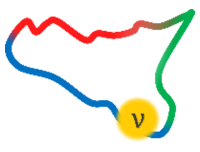Speaker
Description
The Muon $g-2$ collaboration at Fermilab has announced their final result of the anomalous magnetic moment of the muon. This result is now in agreement with the latest theoretical prediction to the $1\sigma$ level. This new result further constrains the allowed parameter space, but does not rule out all possible new physics contributions the muon $g-2$. We study the implications for one of the relevant models, the gauged $U(1)_{L_\mu - L_\tau}$. When using this model to resolve the previous $4\sigma$ tension, results from muon neutrino trident (MNT) scattering experiments would restrict the mass of the new gauge boson ($Z'$) to be less than $300$ MeV. Since the theory and experimental data difference for muon $g-2$ is lowered down to $1\sigma$, the requirement for $m_{Z'}\lesssim 300\,{\rm MeV}$ is much relaxed. Within the updated allowed range of $Z'$ boson mass, we study the models implications for electron and tauon $g-2$ as well as future muon colliders. We find that muon collider can effectively probe the $U(1)_{L_\mu - L_\tau}$.

